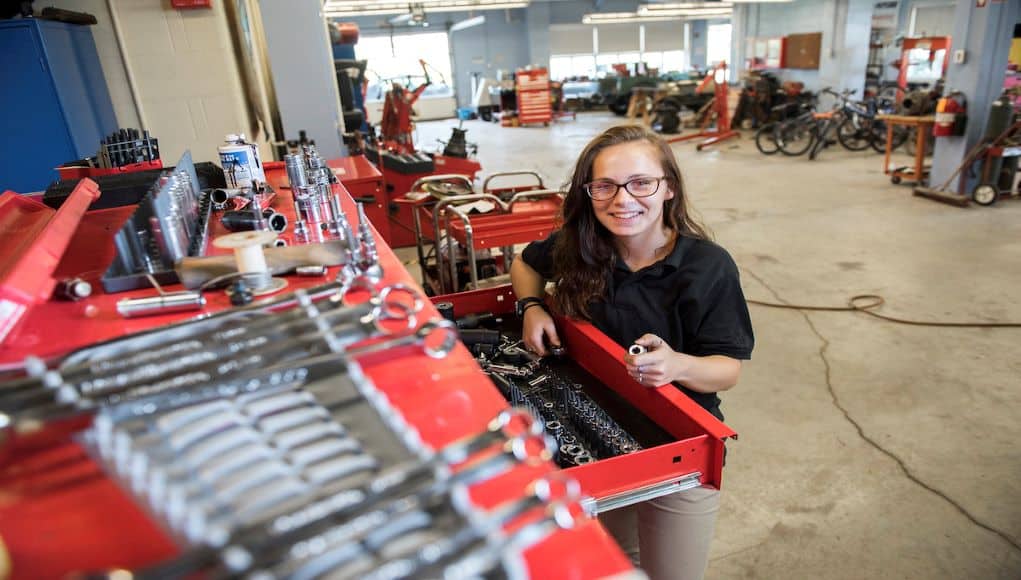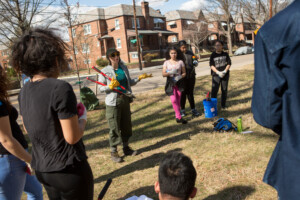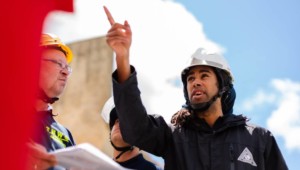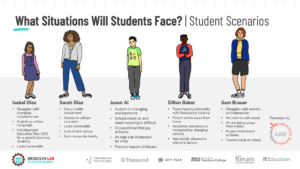Creativity: The Secret to Success in the Trades

By: Dave Curry
Jazzy, one of our high school seniors, already has experience building homes for others. After taking specialized construction and carpentry classes through Milton Hershey School’s Career and Technical Education program, she learned how to install flooring and doors, sand and paint drywall, and adjust electrical and plumbing systems.
For students like Jazzy, gaining experience in the trades can lead to future success. According to The Bureau of Labor and Statistics, construction careers, along with healthcare and personal care, will account for more than 5.3 million new jobs by 2022.
While the trade industry’s growing demand is encouraging for students who don’t plan to attend college, many students choose to pursue careers in the trades based on their interest in designing, producing, problem-solving and creating.
While some people may not think the trades promote creativity, that would be suggesting there is only one way to do things. Promoting creativity throughout career and technical education allows students to learn a broad array of skills apart from individual projects.
When students have the freedom to apply their creative instincts throughout technical tasks and projects, they develop highly coveted 21st-century employability skills—including efficiency and resourcefulness, collaboration, and the ability to consider the consumer.
Take a look at how students benefit from creativity in the trades.

Students Learn There are Multiple Ways to Accomplish Tasks
Creating open-ended assignments is important for all subject areas, including the trades.
There are a lot of ways to complete jobs and tasks across all trade industries, especially in 2019. The more of those techniques a student knows, the more innovative and efficient they will be in the future workforce.
In MHS construction and carpentry classes, high school freshmen are required to create a catapult or trebuchet. Instead of giving them an exact process to follow, students must research, design, sketch, construct, and then test their own designs. After seeing the wide range of differences across each design, students realize how much creativity and critical thinking goes into the construction process.
In automotive technology classes, students also learn to think beyond industry standards. This school year, they have been learning how to use solar energy to charge batteries—a creative idea that could transform how they think about vehicle maintenance.
When students realize there’s more than one way to complete a project, it can lead to innovation and ingenuity.

Students Learn to Think About Their Consumer
Creativity, combined with knowledge, can help students find inventive ways to meet consumers’ needs. For example, in our automotive shop, students learn how to take ordinary car engines and customize them in a way that benefits consumers—making their skillset more marketable, and ultimately, more lucrative.
The design thinking process requires students to work with an end user in mind and often involves the input of both the customer and the peers who are working with them. This collaboration and gathering of information are qualities that are necessary and highly coveted in the workplace, regardless of the industry they pursue.
For culinary arts students, they must consider their end user and apply their creativity when designing, prototyping, and producing menus for specific catering events across campus.
In carpentry classes, students must use empathy to understand consumers’ needs before designing and building storage containers. With creative designs such as a storage container for garden tools or a shoe storage chest with LED lights, students will put their products to the test and determine whether they successfully considered their consumers’ needs. The storage containers are then sold at Milton Hershey School’s Project Market (featured below), a student-run business that’s open to the public.

These types of creative lessons allow students to consider the human impact of their trade.
Students View Mistakes as Part of the Creative Process
Learning how to follow industry guidelines, while understanding when it’s appropriate to break away from the status quo, is key to success in any industry.
There are some directions that need to be followed precisely, which is an important part of hands-on learning. However, there should be no less of an emphasis on creativity. Encourage students to make mistakes so they can learn how to work through adversity as well.
Each fall, culinary students apply their creativity and problem-solving abilities when they explore fields of fruits and vegetables on campus and examine the harvest. If a certain crop has been affected by harsh weather, students must overcome this challenge by designing creative recipes and menus based around the produce available.
When trying a new tactic or idea in any field, creativity helps students troubleshoot a problem more effectively and recognize there are multiple solutions to the same problem.

Students Use Creativity to Lay the Groundwork for Long-Term Business Goals
Whether students are performing electrical work, masonry, plumbing or carpentry, adding their own unique style to the craft can help distinguish their abilities and prepare them for entrepreneurial success.
Creativity lends itself to more individuality on the design end if students in the trades want to start their own business or market their unique style of work in the future.
For example, in our construction and carpentry classes, students came up with the idea to salvage old barn wood and use their carpentry skills to construct an American flag from the wood.
When we encourage students to pursue their individual hobbies and interests within each trade, we’re fostering passionate, creative and inventive thinkers.
These are the thinkers, and future employees, who will know how to use their trade to positively impact consumers and humanity as a whole.
For more, see:
- Dallas County Promise: Leveraging Ed-Fi Technology for College & Career Readiness
- Building the Bridge of College and Career Readiness from PreK-12
- Redefining Readiness
Dave Curry is the Director of Career and Technical Education at the Milton Hershey School.
Stay in-the-know with innovations in learning by signing up for the weekly Smart Update.







Patti Shade
Something to strive for in all subject areas!
“When we encourage students to pursue their individual hobbies and interests within each trade, we’re fostering passionate, creative and inventive thinkers.”